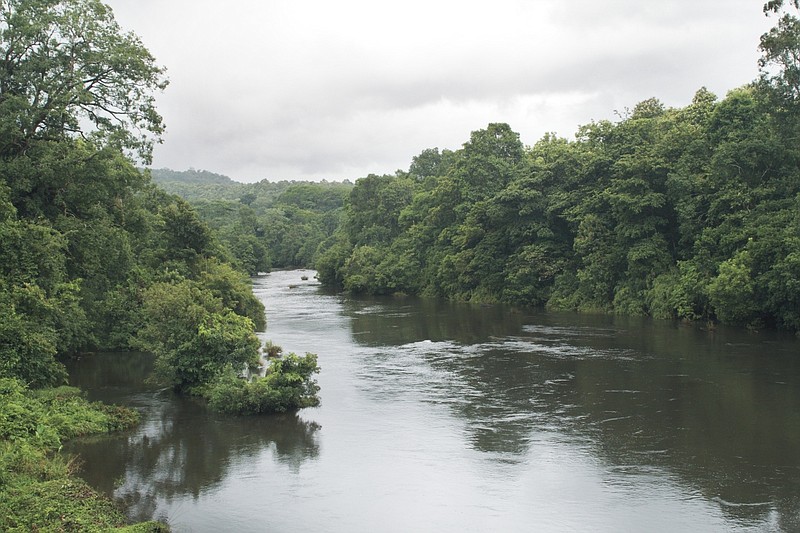The U.S. Army Corps of Engineers' Fort Worth District has approved the tentatively selected plan to reallocate Wright Patman Lake and raise it to a level of 235.
The multi-year study, done in partnership with the Sulphur River Basin Authority, shows the lake could be raised six to seven feet and provide an additional 200,000 acre-feet per year. An acre-foot of water is the amount of water that would cover one acre of land one foot deep, equal to 325,851 gallons of water.
"SRBA is certainly encouraged that this federal study at this point is recommending reallocation," SRBA Chairman Chris Spencer said. "We believe that reallocation of Patman would be the most environmentally friendly in protecting local property rights in the most efficient manner possible. What we want is minimal impact to private property owners. We believe reallocation at this point in time is the best solution to meet future water needs of Texas."
In 2005, the river authority and the corps entered into a 50/50 cost-sharing agreement for the study and that contract was modified in 2012.
SRBA is funded by the Joint Commission for Program Development, a group of five water districts in the Dallas Metroplex seeking water for their growing population.
A press release from SRBA states: "The approved Texas State Water Plan identifies approximately 600,000 acre-feet of water needs from the Sulphur River Basin to meet increasing demands from population and economic growth in the DFW Metroplex region of the state by 2070, and is premised on access to both water from Wright Patman Lake for short-term needs (2040) and from the proposed Marvin Nichols Reservoir for long-term needs (2070). USACE's announcement today regarding reallocation of water in Lake Wright Patman would provide a cost-effective solution for the short-term needs of 200,000 acre-feet by 2040, but also confirmed that the federal government will not recommend a reallocation of that lake water to meet the entire 2070 need of 600,000 acre-feet, thus implicating the continued need for the construction of the Marvin Nichols Reservoir in the future."
The proposed Marvin Nichols Reservoir has long been a point of contention in East Texas, with staunch opinion both for and against the construction.
Liz Fazio Hale, Riverbend Water Resources District's executive director/CEO, said they are dedicated to meeting local water needs first.
"A study level of elevation 235 seems to be within an appropriate range of study, especially as opposed to the much higher levels previously discussed, such as an elevation of 242," she said. "Riverbend will continue to follow the process closely and is committed to ensuring that water supply is developed to first meet local needs and further to meet the needs of the state of Texas."
Steve Mayo, water liaison and former mayor of the city of Texarkana, Texas, said the city also wants to meet local needs before those outside the region.
"I'm cautious about any true 'milestone' having been accomplished," Mayo said. "The TSP was promised to over three years ago and to-date, the public has yet to see a document outlining the timeline or process for action beyond this TSP meeting. Overall, we are concerned about how our local resources will be used to support our local needs. We are disappointed that no efforts by SRBA have been made to incorporate local funding partners or to address local interests as was prescribed by the Texas Legislature last session in an SRBA Sunset bill."
Except for the Clean Rivers Program, which is funded by the state and facilitated through SRBA, the river authority does not receive funding other than the monies provided by JCPD. This lack of additional funding sources was addressed in HB 2180, passed during the last session of the Texas Legislature. It addressed key failures within SRBA, including lack of transparency, the need for board training, the hiring of an executive director and the need for a strategic plan. The organization now provides board training, posts agendas and meeting minutes on their website, has put together a strategic plan and is in the process of interviewing two final candidates for the executive director position.
State Rep. Lyle Larson, chairman of the Texas House of Representatives Committee on Natural Resources, said the cooperation to provide additional water is much needed.
"We commend the Army Corps of Engineers for partnering with Texas water suppliers in helping to identify water supply solutions for our growing economy," Larson stated in the press release. "This partnership between the corps and the Sulphur River Basin Authority to make additional water available from our existing reservoirs is exactly the type of federal-state cooperation that we need in Texas and around the nation."
The TSP now must be approved by the SRBA Board of Trustees and JCPD, which would be required to fund the reallocation. Spencer said that cost could be in the billions of dollars. After that, it must be approved by the regulatory side of the corps and a final approval vote must be made by the U.S. Congress.
For more information on the study, go to www.srbatx.org.

